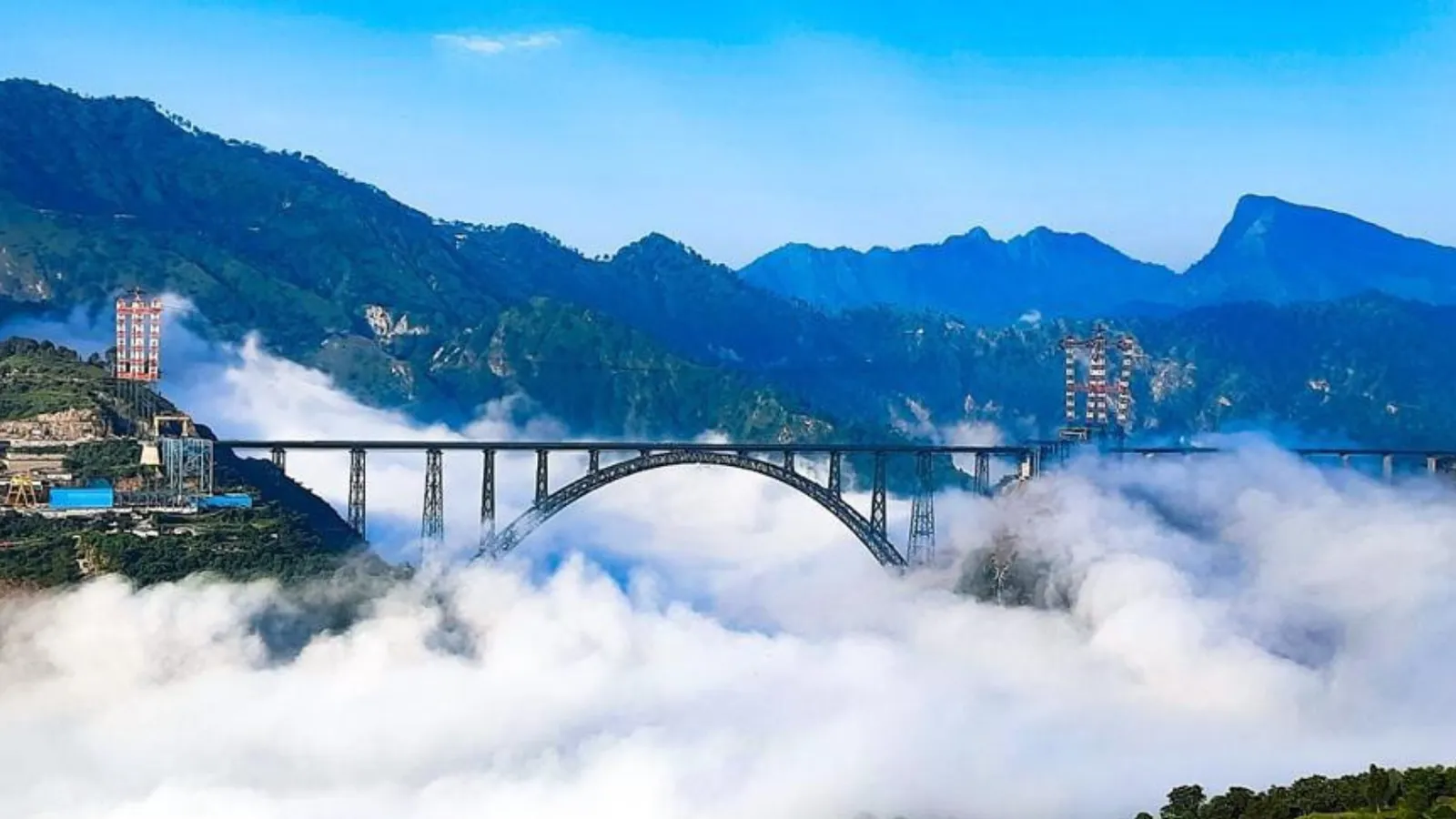Spanning the majestic Chenab River in Jammu and Kashmir, the Chenab Rail Bridge stands as a testament to human ingenuity and engineering prowess. This engineering marvel, part of the Jammu-Udhampur-Srinagar-Baramulla Rail Line (JUSBRL) project, is not just an infrastructural achievement but a bridge connecting dreams and reality. In this blog, we delve into the fascinating details of the world’s tallest rail bridge, exploring its design, construction, and significance.
At a Glance: Key Features of the Chenab Rail Bridge
| Feature | Detail |
|---|---|
| Location | Between Bakkal and Kauri, Reasi district, J&K, India |
| Total Length | 1,315 meters |
| Height Above River Bed | 359 meters |
| Main Arch Span | 467 meters (linear), 550 meters (curvilinear) |
| Construction Cost | Rs14.86 billion (approximately $181 million) |
| Completion | Construction completed in August 2022; operational in 2024 |
| Lifespan | 120 years |
| Workers Required | Approximately 5,000 |
| Engineers Required | A team of 150+ engineers and experts |
| Steel Used | Approximately 25,000 metric tons |
| Pillars | 2 main pillars and 14 supporting pillars |
| Starting Point | Reasi district, Jammu and Kashmir |
| Endpoint | Kauri, Jammu and Kashmir |
The Genesis of the Rail Bridge
The bridge’s inception was fueled by the need to enhance transportation and connectivity in the challenging terrain of Jammu and Kashmir. The rugged Himalayan landscape, marked by deep gorges and the Chenab River, necessitated the construction of this long-span bridge. Initiated in 2003, the project faced several challenges and underwent a design revision before resuming in 2012.
Design and Construction: A Symphony of Global Expertise
The Chenab Rail Bridge, a steel and concrete arch bridge, features a unique two-ribbed design made from large steel trusses. The designers opted for a blend of national and international standards, incorporating British Standards (BS), International Union of Railways (UIC), and Euro codes to ensure safety and durability.
The Journey and Challenges of the Rail Bridge
The project, managed by Konkan Railway Corporation Limited and a consortium of engineering firms, faced significant challenges due to the difficult terrain. The bridge consumed approximately 25,000 metric tons of steel, 4,000 metric tons of reinforced steel, and 46,000 cubic meters of concrete.

Image Credit: India TV
Significance and Impact
Beyond its structural marvel, the Chenab Rail Bridge is a symbol of India’s infrastructural ambition and engineering capability. The bridge’s completion marks a significant milestone in the JUSBRL project, promising enhanced mobility and a new era of travel in the region.
Exploring Related Engineering Facts
The Chenab Rail Bridge is one of many remarkable engineering projects shaping our world. Unveil the stories behind marvels like the Atal Setu, Ayodhya’s Ram Mandir, and the emerging tourist paradise of the Lakshadweep Islands. Enhance your knowledge in various fields of engineering and architecture, from MEP coordination to urban planning transformations, at Pinnacle IIT Blogs and Pinnacle IIT.
Conclusion
The Chenab Rail Bridge is more than just a structure; it’s a beacon of progress, uniting regions and inspiring future generations of engineers and architects. As we await its operational debut in 2024, we celebrate the blend of vision, expertise, and perseverance that brought this dream to life.

